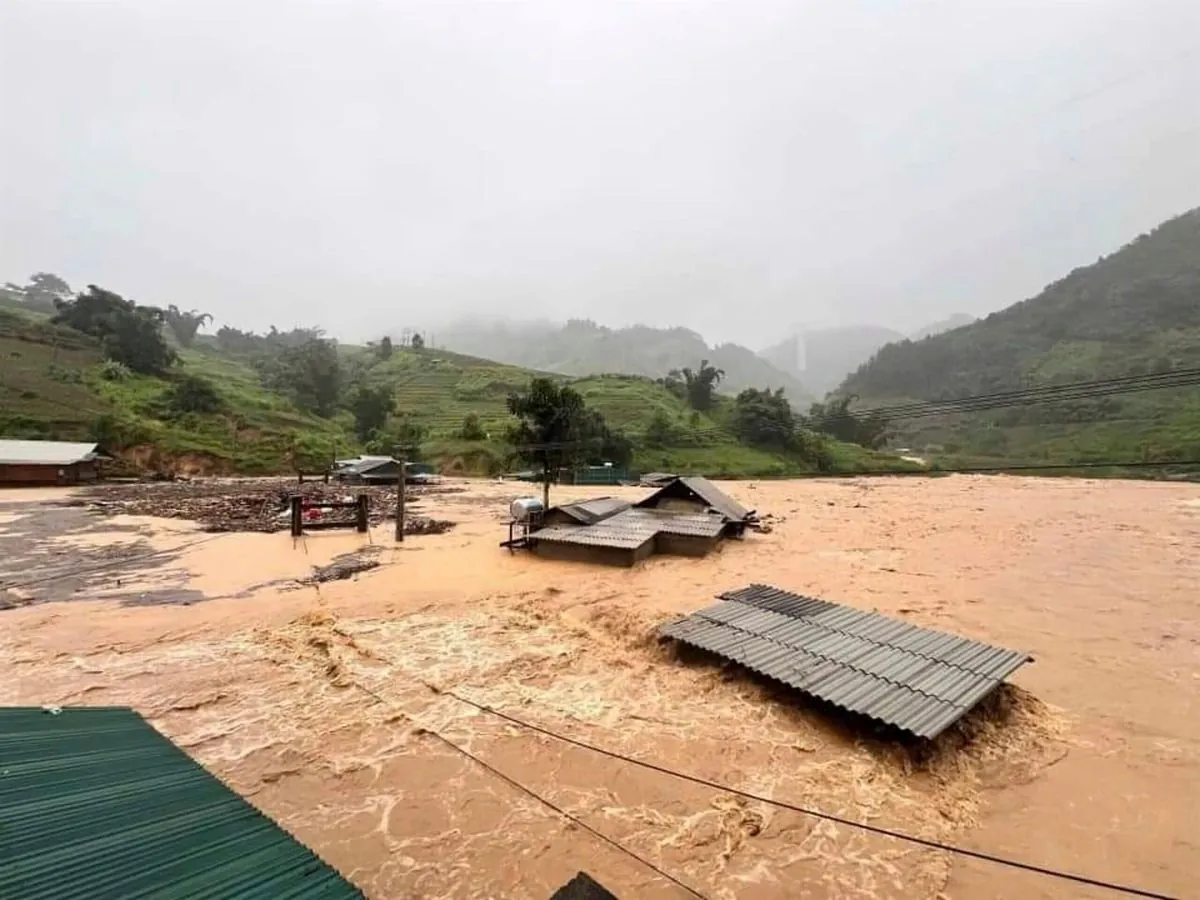In the wake of Typhoon Yagi, Vietnam faces a devastating aftermath as the death toll climbs to 233. The country, which experiences an average of 5-6 typhoons annually, has been severely impacted by this recent natural disaster.
Pham Minh Chinh, Vietnam's Prime Minister, visited the affected areas on Thursday, pledging unwavering support for the ongoing search and rescue operations. "Their families are in agony," he stated, emphasizing the government's commitment to locating those still missing.
The northern Lao Cai province, bordering China, has been particularly hard-hit. In the small village of Lang Nu, emergency crews have recovered 48 bodies, with 39 individuals still unaccounted for. The village was engulfed by a deluge of water, mud, and debris from the surrounding mountains on Tuesday.
Across the nation, 103 people remain missing, and over 800 have sustained injuries. The typhoon, which made landfall last Saturday with winds reaching 149 kph (92 mph), has been identified as the strongest to hit Vietnam in decades.
Rescue efforts face significant challenges due to severely damaged infrastructure. Roads leading to Lang Nu have been rendered impassable, preventing the use of heavy equipment in the search operations. Despite these obstacles, approximately 500 personnel, aided by sniffer dogs, continue their tireless efforts.
Vietnam's disaster response system, which involves coordination between various government agencies and the military, has been fully mobilized. The Vietnamese Red Cross is playing a crucial role in providing relief to affected communities.
In a glimmer of hope amidst the tragedy, eight individuals from two Lang Nu households were found safe early Friday morning. They had been away from the area when the flash flood struck.
This disaster highlights Vietnam's vulnerability to natural calamities, exacerbated by its long coastline and mountainous regions. Climate change is expected to increase the frequency and intensity of such events, underscoring the importance of the country's national strategy for natural disaster prevention and mitigation.
As Vietnam grapples with the immediate crisis, the long-term economic impact looms large. Natural disasters typically cost the country 1-1.5% of its GDP annually. However, Vietnam has made significant strides in improving its disaster response capabilities over recent decades.
The international community often assists in post-disaster recovery efforts, and it is likely that aid organizations will play a role in helping Vietnam rebuild in the aftermath of Typhoon Yagi.
"We will not relent in our search for those still missing."
As rescue operations continue, the nation remains united in its efforts to support affected communities and prevent future tragedies through improved infrastructure and disaster preparedness measures.
